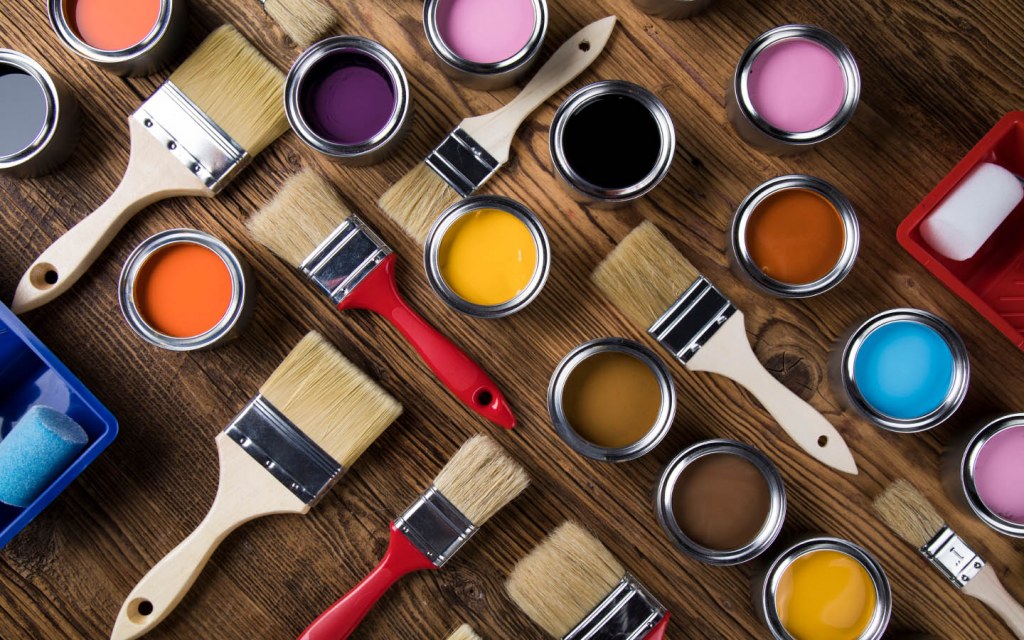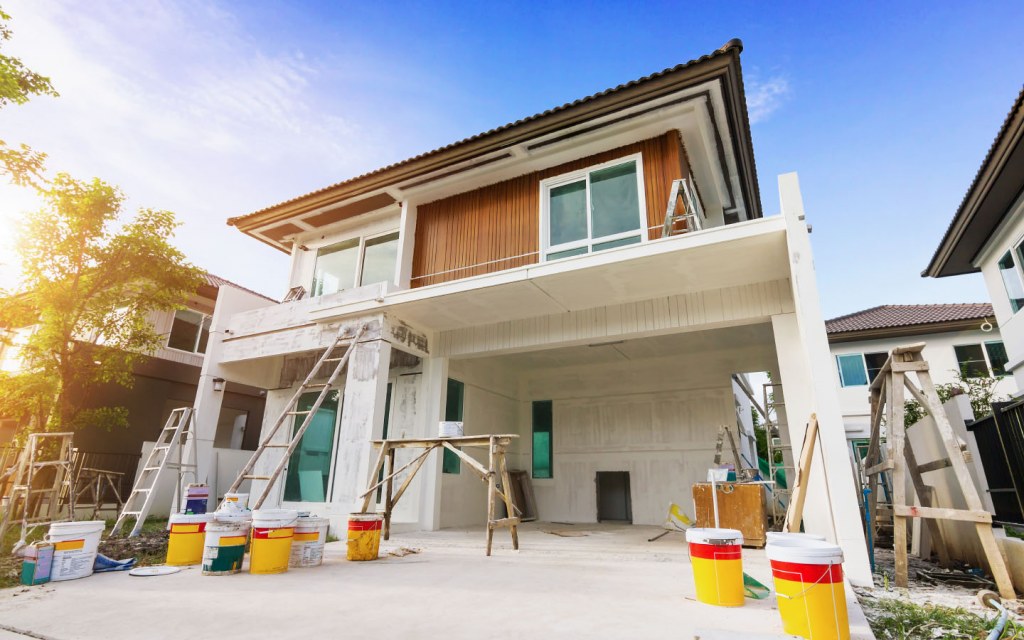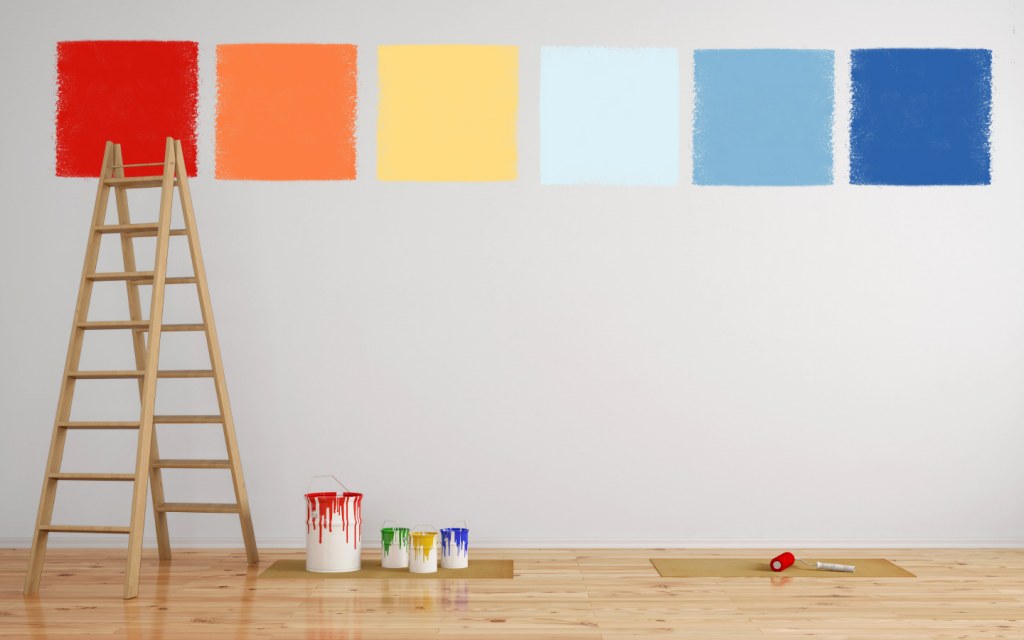Home » Home Decor » The Difference between Interior and Exterior Paints
There’s nothing that can spruce up your house like a fresh coat of paint. However, owing to the numerous options available in the market, choosing the right type of paint for your home improvement project can turn out to be a bit tricky—especially when it comes to interior vs exterior paints.
Although both of these paints look similar, their formulae and component are quite different. So, if you are planning to change the colour palette of your home but want to know the main difference between interior and exterior paints, you’ve come to the right place.
Basic Paint Components

Paint comprises four major components: pigments, resins, additives and solvents.
The pigment is the actual colour of the paint while the resin is an organic compound that adheres it to the surface. Resins are usually acrylic, silicone or epoxy. The additives are essentially chemicals that protect the surface against different elements, such as weather conditions, exposure to UV rays, fungal growth and mildew to name a few. They also make the paint easy-to-apply and easy-to-clean.
When it comes to solvents, it is the component of paint that makes it wet. There are usually two types that are used in paints: water and mineral spirits. In latex or water-based paints, the solvent is obviously water. Meanwhile, in oil-based paints, the mineral spirit is used as the solvent.
A common misconception in this interior vs exterior paint debate is that oil-based paints are meant for the outside of the house while the latex paints are meant for indoors. That’s not true. Both exterior and interior house paints can be latex or oil-based, depending on your personal preference and the requirements.
Main Differences between Interior vs Exterior Paints

Painting your house can be a challenging task, so you don’t want to mess it up by choosing the wrong type of paint.
Here are the main differences between interior and exterior house paints.
- Quantity of pigments
- Type of resins
- Different additives
- Outgassing
- Cleanliness
Let’s take a further look at these exterior vs interior paint differences.
Quantity of Pigments
Exterior paints contain more pigment than the interior ones.
Types of Resins
The resins used in binding interior paints are more rigid compared to those in exterior paints.
Since interior walls don’t have to face harsh weather conditions, they don’t require protection against UV rays and other elements. However, these paints must provide protection against scuffing. This is why resins in interior paints are usually rigid.
On the other hand, owing to changes in the temperature and exposure to moisture, exterior paints need to be tougher. They should also resist fading due to sunlight, peeling, chipping and cracking. The binding resins in exterior paints are soft and flexible so that they are not affected by the expansion or contraction of the surface.
Different Additives
Usually, interior paints don’t require additives like pesticide and fungicide. Neither do they require protection from harsh sunlight. Exterior paints, however, contain a number of additives.
Outgassing
Outgassing refers to the release of gas following the application. Interior paints don’t cause outgassing, making them ideal to be used indoors. Meanwhile, exterior paints can cause outgassing, which may last up to 48 hours depending on the quality of the paint. Not to mention, paints meant for the external walls usually keep releasing small amounts of gas for several years.
Cleanliness
Depending on the type of finish you have chosen for your home, interior paints are usually easy to clean and wash. Exterior walls are usually water-proof and more difficult to clean.
Can you use exterior paint inside the home?

The short answer is no, you can’t use exterior paint your home or vice versa.
The long answer, however, is that ingredients of interior and exterior paints are different. Therefore, both of these paints have different properties and are not interchangeable because while exterior paints are tough, they also cause outgassing and are prone to scuffing and scratching. Interior paints, on the other hand, don’t need sunlight for curing, are easily washable and don’t release gases that make it difficult to breathe inside the house. In fact, even mixing interior paints with exterior paints is not advisable because of their different formulae.
However, if you are only planning to paint the interior of your home, here is our detailed analysis of different types of paint finishes intended for each room. Similarly, don’t forget to check out this handy guide on how to calculate the quantity of paint for your next DIY home improvement project.
In case you are debating whether you should paint your walls or cover them up, take a look at our tutorial on how to wallpaper your room like a pro.
To learn more about interior vs exterior paints, stay connected to Zameen Blog – the best lifestyle and home décor blog in Pakistan. Also, subscribe to our newsletter on the right to remain up-to-date about the latest developments in the real estate and construction sector of Pakistan.
For queries and feedback, feel free to drop an email on blog@zameen.com.



